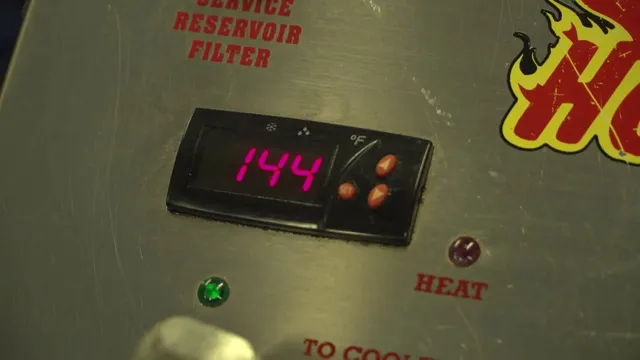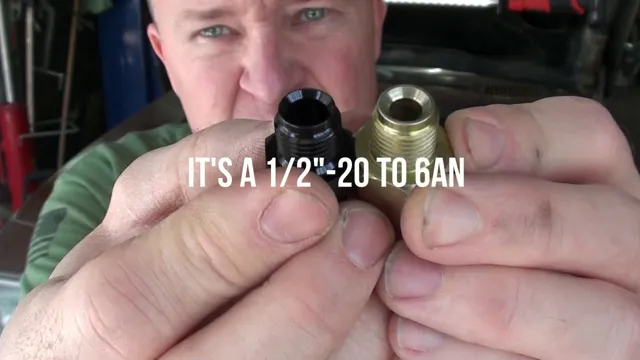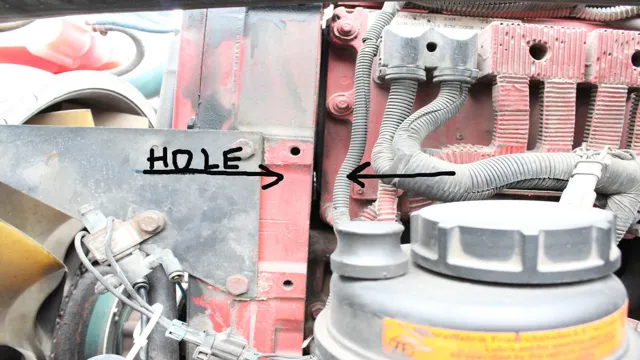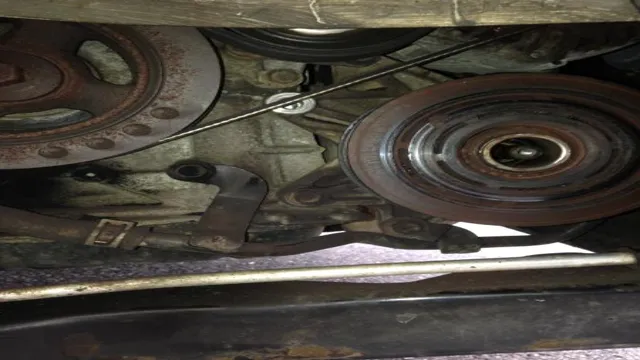Unlock the Secret to a Efficient Transmission System: The Ultimate Guide on How to Clean Transmission Cooler Lines!
Transmission cooler lines play an essential role in your vehicle’s cooling system. They are responsible for transporting transmission fluid back and forth between the transmission and the cooler. Over time, the lines can get clogged with debris or rust, which can lead to a host of issues, including overheating and transmission failure.
The good news is that cleaning your transmission cooler lines is a simple and cost-effective way to maintain the health of your vehicle. In this blog post, we will go over step-by-step instructions on how to clean transmission cooler lines and keep your vehicle running smoothly. So, whether you are a seasoned mechanic or a novice DIYer, this guide will help you get the job done right and ensure your vehicle stays on the road for years to come.
What Are Transmission Cooler Lines?
If you’re wondering how to clean transmission cooler lines, it’s important to first understand what they are. Transmission cooler lines are crucial components in your vehicle’s cooling system that help regulate the temperature of your automatic transmission fluid. These lines are typically made of steel or aluminum and are designed to prevent the transmission fluid from overheating, which can lead to costly repairs down the line.
Over time, these lines can become clogged with debris, which can impair their ability to function properly. To clean transmission cooler lines, you’ll need to flush out the system with a specialized cleaner and then replace the fluid and filter. It’s always a good idea to consult your owner’s manual or a trusted mechanic for guidance on how to properly maintain your vehicle’s transmission cooler lines to ensure optimal performance and longevity.
Explanation of transmission cooler lines and their function
Transmission cooler lines are vital components in an automatic transmission system. They are responsible for carrying the transmission fluid from the transmission to the cooler and back. These lines are typically made of metal and come in a variety of shapes and sizes, depending on the make and model of the vehicle.
They are designed to withstand the high pressures and temperatures that are generated by the transmission system. The function of these lines is to keep the transmission fluid at the right temperature to ensure proper operation of the transmission. Without transmission cooler lines, the transmission fluid would become overheated and cause damage to the transmission itself.
It’s essential to keep these lines properly maintained and inspected regularly to ensure optimal performance and safety on the road. So, if you notice leaks or damage in your transmission cooler lines, it’s essential to get them repaired or replaced immediately to avoid potential problems down the road.

Signs You Need to Clean Your Transmission Cooler Lines
Are you experiencing problems with your vehicle’s transmission? It could be due to dirty transmission cooler lines that need to be cleaned. Signs that your transmission cooler lines need to be cleaned include slipping gears, overheating, and a burning smell coming from your transmission. Cleaning your transmission cooler lines is an important maintenance task that will help your vehicle perform better and last longer.
To clean your transmission cooler lines, start by flushing out the old fluid and replacing it with new fluid. Then, use a cleaning solution to dissolve any buildup in the lines. Once the lines are clean, refill the transmission fluid and check for any leaks.
If you don’t feel confident cleaning your transmission cooler lines yourself, it’s best to take your vehicle to a professional mechanic who can do it for you. By keeping your transmission cooler lines clean, you can ensure that your vehicle runs smoothly and avoids costly repairs in the future.
How to determine if your transmission cooler lines need cleaning
Transmission cooler lines Are you experiencing trouble shifting gears? Does your vehicle seem to be overheating? These could be signs that your transmission cooler lines need cleaning. Over time, debris and dirt can build up in these lines, decreasing the efficiency of your transmission system. If left untreated, this can lead to more significant problems down the road.
One way to determine if your cooler lines need cleaning is by checking the transmission fluid. If the fluid appears discolored or has a burnt smell, this is a clear indication that your transmission cooler lines are dirty and need to be cleaned. Another sign is if your vehicle is leaking transmission fluid.
In either instance, it’s essential to schedule an inspection with your local auto shop to help keep your vehicle running smoothly. Cleaning your transmission cooler lines should be a part of your regular vehicle maintenance to ensure that your transmission system is working correctly and efficiently.
Tools and Materials You Will Need
If you’re looking to clean your transmission cooler lines, you’ll need a few tools and materials to get the job done right. Firstly, you’ll want a container to catch any fluid that comes out of the lines, such as a drain pan or bucket. Additionally, you’ll need a wrench set to disconnect the cooler lines, and a cleaner specifically designed for flushing out transmission systems.
Some people also find it helpful to have an air compressor to blow out any debris that may have accumulated inside the lines. And don’t forget to have some rags or towels nearby to clean up any spills or drips. By gathering these tools and materials beforehand, you’ll be well-prepared to tackle the job of cleaning your transmission cooler lines and ensuring your vehicle runs smoothly.
List of tools and materials required for the cleaning process
When it comes to cleaning, having the right tools and materials is essential to get the job done effectively. To start, you’ll need a set of cleaning gloves to protect your hands from harsh chemicals. Next, a set of scrub brushes in various sizes can help to remove tough stains in tight spaces.
An all-purpose cleaner is a versatile option for use on different surfaces, and a glass cleaner will leave your windows streak-free. Microfiber cloths are great for dusting and wiping down surfaces without leaving behind lint or residue. A bucket and mop or a steam cleaner can tackle floor cleaning, while a vacuum with multiple attachments can help with upholstery and carpet cleaning.
Finally, be sure to stock up on paper towels, trash bags, and recycling bins to keep your space tidy. With these tools and materials, cleaning can be a breeze and you’ll be able to take on any mess with ease.
Precautionary Measures to Take
When it comes to maintaining your vehicle, ensuring the transmission cooler lines are clean is crucial to the overall performance of your car. There are several precautionary measures you can take to make sure these lines are functioning correctly. First, check the fluid levels and color regularly to ensure there are no leaks or contamination in the transmission system.
Then, use a cleaning solution specifically designed for transmission lines to remove any build-up or debris. It’s important to be gentle when cleaning, as using too much force could damage the lines. Additionally, make sure to use the proper tools and follow the manufacturer’s instructions closely to prevent any unwanted damage.
By taking these precautions, you can keep your transmission cooler lines clean and functioning properly, ensuring a smooth and safe ride for years to come.
Safety tips to follow before cleaning transmission cooler lines
Cleaning transmission cooler lines is a task that should not be taken lightly. Before you start, there are some safety measures that you should follow to prevent accidents and injuries. First and foremost, make sure that the engine is completely cool before attempting to work on the cooler lines.
Hot transmission fluid can cause serious burns if it comes into contact with your skin. Additionally, wear protective gloves and eyewear to prevent any accidental splashing of fluid into your eyes or on your hands. You should also have a proper drain pan and absorbent pads ready to catch any fluid that may leak during the process.
Finally, always work in a well-ventilated area to avoid inhaling any harmful fumes. By following these safety tips, you can ensure the cleaning process goes smoothly and without incident.
Step-by-Step Guide to Cleaning Transmission Cooler Lines
Transmission cooler lines are critical components of your vehicle’s automatic transmission system. These lines help to keep the transmission fluid at the right operating temperature by dissipating heat generated during the transmission’s operation. It is essential to clean these lines to ensure that the transmission functions optimally.
To clean the transmission cooler lines, you must first remove them from the transmission. Once disconnected, you can use a high-pressure flusher to force cleaning fluid through the lines. It is crucial to remove any debris or contaminants that may have accumulated in the lines.
After flushing, inspect the lines for damages, such as cracks or leaks, which may affect the performance of your transmission system. Regular cleaning of transmission cooler lines ensures that they continue to function correctly, reducing the risk of transmission system failure. With this step-by-step guide, you can clean your transmission cooler lines and keep your vehicle operating at peak performance.
Detailed instructions on how to clean transmission cooler lines
If you’re experiencing issues with your transmission, one of the culprits might be dirty transmission cooler lines. These lines are responsible for cooling down the transmission fluid that flows through your vehicle’s system. If they become clogged or filled with debris, your transmission can overheat and wear out prematurely.
That’s why it’s important to clean your transmission cooler lines regularly. Here’s a step-by-step guide to help you do just that. First, locate the lines by referring to your vehicle’s owner’s manual.
Then, disconnect them from the transmission to allow fluid to drain out. Next, use a cleaning solution specifically designed for transmission systems to flush out any dirt or debris. Finally, reinstall the cooler lines and refill your transmission fluid.
Regular cleaning of your transmission cooler lines can improve the lifespan and performance of your vehicle’s transmission, ultimately saving you time and money in the long run.
Conclusion
In conclusion, cleaning your transmission cooler lines can seem like a daunting task, but with a few simple steps, it’s a breeze. Just be sure to have the right tools, be patient, and remember to check for any leaks before taking your vehicle out for a spin. So whether you’re a DIY enthusiast or just want to save a few bucks on your next mechanic bill, cleaning your transmission cooler lines is a smart choice for any savvy car owner.
And who knows, maybe you’ll even impress your friends with your newfound auto skills. Happy cleaning!”
Importance of regular cleaning of transmission cooler lines
Regular cleaning of transmission cooler lines is essential to ensure optimal performance and extend the lifespan of your vehicle’s transmission. Over time, contaminants such as dirt, debris, and metal shavings can accumulate in the cooler lines, causing clogs and reducing the flow of transmission fluid. This, in turn, can lead to overheating, friction, and premature wear and tear on the transmission components.
To clean the transmission cooler lines, start by draining the old transmission fluid and removing the cooler lines. Use a soft-bristled brush and a cleaning solution to remove any buildup of gunk and debris. Be sure to rinse the lines thoroughly with water and allow them to dry completely before reinstalling them and refilling the transmission fluid.
Regular transmission cooler line cleaning should be part of your routine vehicle maintenance to ensure that your transmission is running smoothly and efficiently. By taking care of your transmission, you can avoid costly repairs and replacements down the road. Remember, prevention is always better than cure.
FAQs
What are transmission cooler lines and why do they need to be cleaned?
Transmission cooler lines are responsible for transporting transmission fluid to and from the cooler. Over time, these lines can accumulate debris, sludge, and other contaminants that can impair their performance. Cleaning them regularly helps to ensure smooth transmission operation.
How often should transmission cooler lines be cleaned?
The frequency of transmission cooler line cleaning depends on factors such as driving conditions and the age of the vehicle. As a general rule, it’s a good idea to have them cleaned at least once a year or more frequently if you frequently tow heavy loads or drive in stop-and-go traffic.
What are the signs that transmission cooler lines need cleaning?
Signs that transmission cooler lines need to be cleaned include sluggish shifting, noise when shifting gears, hard shifting, and the transmission overheating. If you notice any of these symptoms, it’s important to clean the cooler lines as soon as possible to avoid potentially costly damage to your transmission.
Can I clean the transmission cooler lines myself, or should I take my car to a professional?
While it is possible to clean transmission cooler lines yourself, it’s generally recommended that you take your car to a professional for this procedure. Cleaning the cooler lines involves disconnecting them from the transmission and removing debris from their interior, which requires specialized tools and skills. A professional mechanic can ensure that the process is performed safely and effectively, helping to prolong the life of your transmission.







